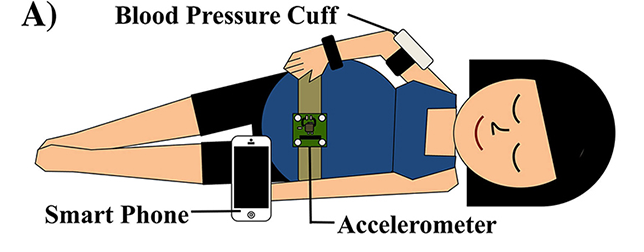Scientists from Purdue University are developing an app and wearable technology to enable pregnant women to use a smartphone to find out whether they have or are susceptible to a preeclampsia, a condition if undiagnosed, could lead to eclampsia – a serious health complication that can put the mother and the baby at risk, and in rare cases, cause death.
Preeclampsia is a complication of pregnancy, marked by high blood pressure in women who have not had high blood pressure in the past. The high blood pressure is accompanied with signs of damage to the kidneys, liver, and other organs. The symptoms are high levels of protein in urine and swelling in the hands, feet and legs.
Read more Innovative Wearable Tracks Fetal Movement Without Ultrasonic Technology
The research is team, led by Craig Goergen, an assistant professor in Purdue’s Weldon School of Biomedical Engineering. Explaining the new device, Goergen said:
“We hope this will allow us to predict and prevent preeclampsia and reduce the number of children born prematurely each year. This could also reduce the long-term health complications for mothers.”
In November, Bill & Melinda Gates gave the team a $100,000 Grand Challenges Explorations grant. The program is part of a group of initiatives by the foundation promoting innovation to solve principal global and health development problems.
“The Gates Foundation is looking for something that’s going to have an impact in the immediate future in low- and middle-income countries,” Goergen said. “They are interested because the treatment and management of preeclampsia in sub-Saharan Africa, India, China and other developing countries is typically very poor.”
Read more Implantable Device to Deliver Drugs to Pancreatic Cancer Tumors
To make the device, all that is needed is an accelerometer on the belly and a blood pressure cuff on the wrist, both of which are connected to a smartphone. The app in the smartphone guides the user to do the test and confirms that the user takes the readings in the correct positions. It then calculates the differences in the diastolic pressure, which are closely a sure way to identify preeclampsia development.
Preeclampsia: a quick look
Preeclampsia accounts for $2.18 billion in U.S. healthcare expenditures in the first 12 months after birth.
Approximately 13 million pregnancies per year are complicated by hypertension, which can lead to premature births and side-effects to the mother
According to the World Health Organization (WHO), nearly 10% of all maternal deaths in Africa and Asia are liked to hypertensive disorders during pregnancy and 25% of all maternal deaths in Latin America. Most of those deaths are avoidable, according to the WHO.
Here’s Craig Goergen explaining the new technology:













